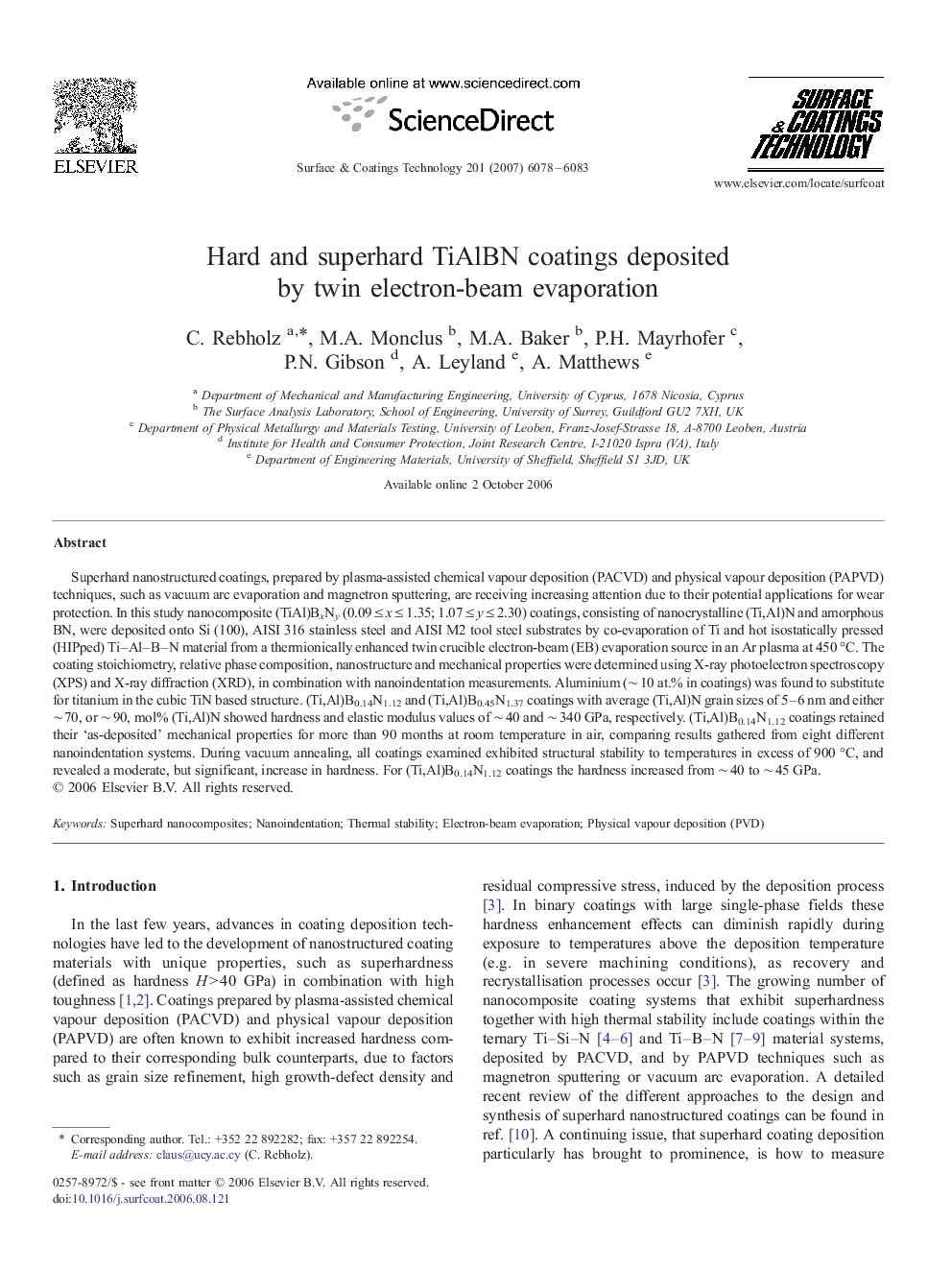| Article ID | Journal | Published Year | Pages | File Type |
|---|---|---|---|---|
| 1661338 | Surface and Coatings Technology | 2007 | 6 Pages |
Superhard nanostructured coatings, prepared by plasma-assisted chemical vapour deposition (PACVD) and physical vapour deposition (PAPVD) techniques, such as vacuum arc evaporation and magnetron sputtering, are receiving increasing attention due to their potential applications for wear protection. In this study nanocomposite (TiAl)BxNy (0.09 ≤ x ≤ 1.35; 1.07 ≤ y ≤ 2.30) coatings, consisting of nanocrystalline (Ti,Al)N and amorphous BN, were deposited onto Si (100), AISI 316 stainless steel and AISI M2 tool steel substrates by co-evaporation of Ti and hot isostatically pressed (HIPped) Ti–Al–B–N material from a thermionically enhanced twin crucible electron-beam (EB) evaporation source in an Ar plasma at 450 °C. The coating stoichiometry, relative phase composition, nanostructure and mechanical properties were determined using X-ray photoelectron spectroscopy (XPS) and X-ray diffraction (XRD), in combination with nanoindentation measurements. Aluminium (∼ 10 at.% in coatings) was found to substitute for titanium in the cubic TiN based structure. (Ti,Al)B0.14N1.12 and (Ti,Al)B0.45N1.37 coatings with average (Ti,Al)N grain sizes of 5–6 nm and either ∼ 70, or ∼ 90, mol% (Ti,Al)N showed hardness and elastic modulus values of ∼ 40 and ∼ 340 GPa, respectively. (Ti,Al)B0.14N1.12 coatings retained their ‘as-deposited’ mechanical properties for more than 90 months at room temperature in air, comparing results gathered from eight different nanoindentation systems. During vacuum annealing, all coatings examined exhibited structural stability to temperatures in excess of 900 °C, and revealed a moderate, but significant, increase in hardness. For (Ti,Al)B0.14N1.12 coatings the hardness increased from ∼ 40 to ∼ 45 GPa.
